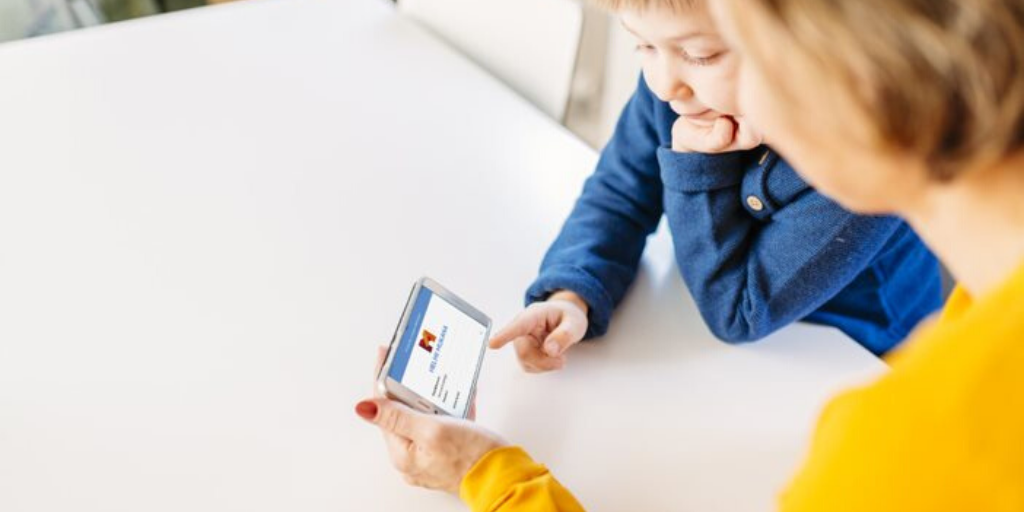Basic education took a huge digital leap, when most pupils transferred to distance learning because of the coronavirus prevention measures. In Tampere, an agile shift was made possible by forward planning, motivated teachers, good tools and connections.
Head of Development Harri Jurvela is looking at the big picture of distance education in Tampere. There are over 30 schools, 1500 teachers and 20 000 pupils in basic education – quite a crowd to transfer to distance learning in very short time.
It didn’t come as a surprise when the Finnish government announced measures to control the coronavirus outbreak. Jurvela had already anticipated the situation: he had asked the City ICT management to provide scenarios on the technical aspects of the potential measures; and Education and Learning Services for preparation of pedagogical support.
I’ve got a three-point theory-in-use. We need to consider pedagogical expertise, technical knowhow and, thirdly, that devices, software and networks are in good working order. When the transfer to distance education was officially declared, I concentrated on these three things, says Jurvela.
Clear guidelines to help through the early stages
To ensure that teachers have working computers to do their job, schools’ devices were allocated for that purpose. Pupils may have been able to cope with smartphones, but devices will be later acquired for them, too, if necessary. Technical and pedagogical support was organised.
I tried to keep in mind especially those, who are not technically oriented: how to best help them to get started with distance education, Jurvela says.
A guideline for teachers was created to initiate distance education procedures. It was based on a text made by the City of Kangasala, with a previous experience of a school-closure due to coronavirus outbreak. Once processed in Tampere the document was shared with other local municipalities and larger cities in Finland.
– We still discuss the situation with municipal colleagues, we share ideas and help each other. The trust-based networks created earlier are now really beneficial, says Jurvela.
Motivated teachers, a strength in the situation
In schools the transfer to distance learning was also predicted, although no-one knew what would really happen in the future. Marika Korpinurmi, Vice-Principal at Annala comprehensive school, thinks that one of the strengths of Tampere was the fact that distance learning tools (notably Office 365 license) had been in use for years. Just as crucial were the teachers – some of them already digital enthusiasts, others just waiting for the last push to the digital leap – but all of them ready to act.
From a teacher’s point of view ICT solutions are deployed only if they are useful. Now that ICT is the only way to connect with pupils, it was put to use really quickly. That’s teachers for you: they roll up their sleeves and get things done, says Korpinurmi.
– I’m super proud of the way everyone was ready to take the leap and worked so hard that in a day or two we transferred the education to a totally new direction, Jurvela says.
Changing routines often means one needs to pay special attention to coping with workload. Remote teaching generates different kinds of challenges than contact instruction. Distance education enables individualised contact with pupils and tailored instruction, but it takes a lot of time and messaging.
– Teachers are committed to work in the best interest of their pupils, but no-one should overdo it, emphasises Korpinurmi.
Getting familiar with remote work tools
According to Jurvela, the digital leap in basic education caused by the coronavirus measures is a giant one. It will change at least the attitude towards remote work tools, but probably also the ways things are done after the pandemic.
Our principals have already said that in the future meetings could be remote ones, saving time and environment when we would avoid driving around because of them, says Jurvela.
In Finland, Basic Education Act does not acknowledge distance education, and teachers and pupils will certainly be back in their classrooms. Korpinurmi is going to encourage the use of Teams in her school – it is after all a skill that pupils will need later in life.
– In fact this period of distance learning is probably producing students who won’t settle for contact instruction only, but will demand remote courses in upper secondary education, says Korpinurmi.
Photo: Jukka Salminen
